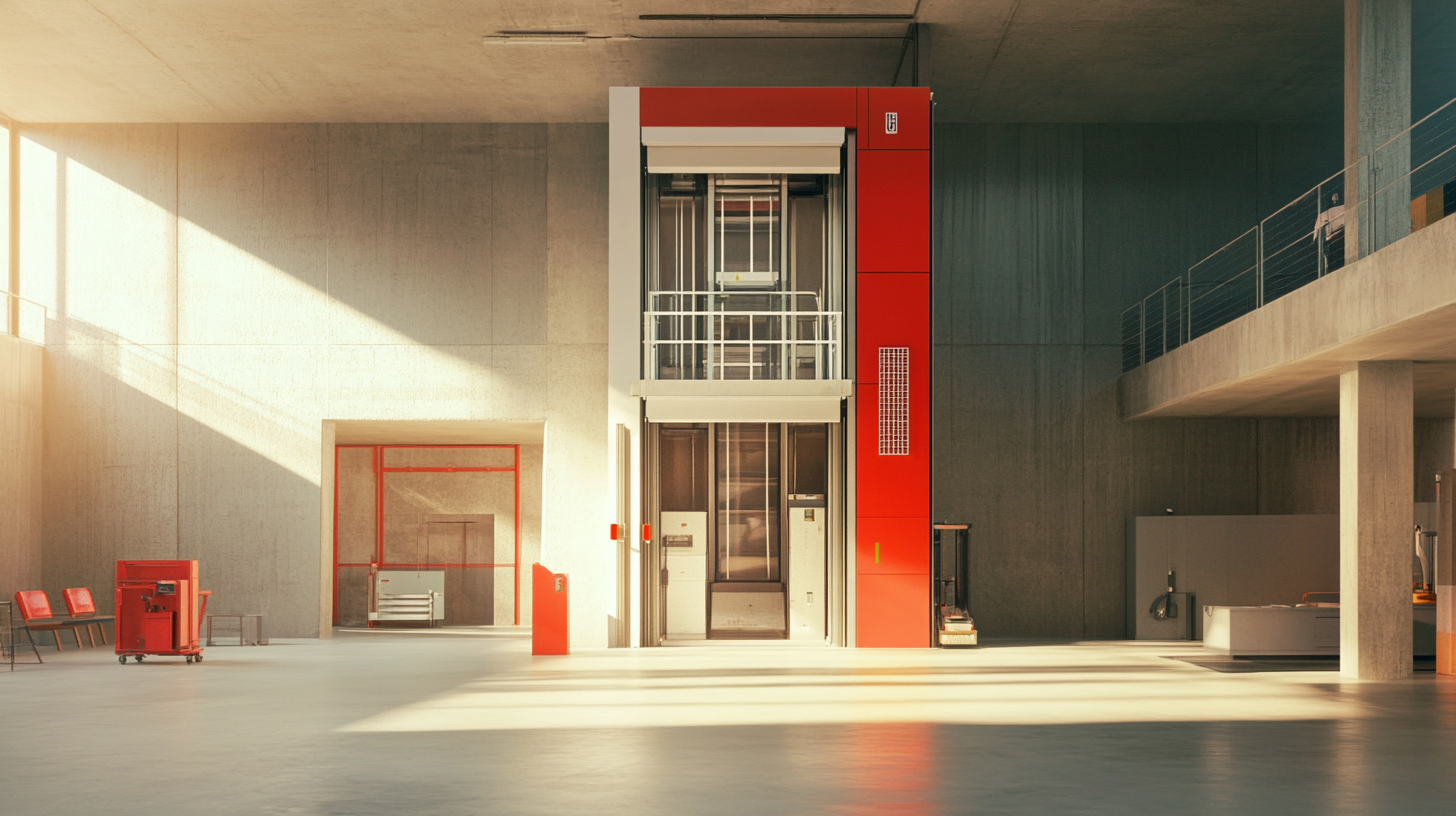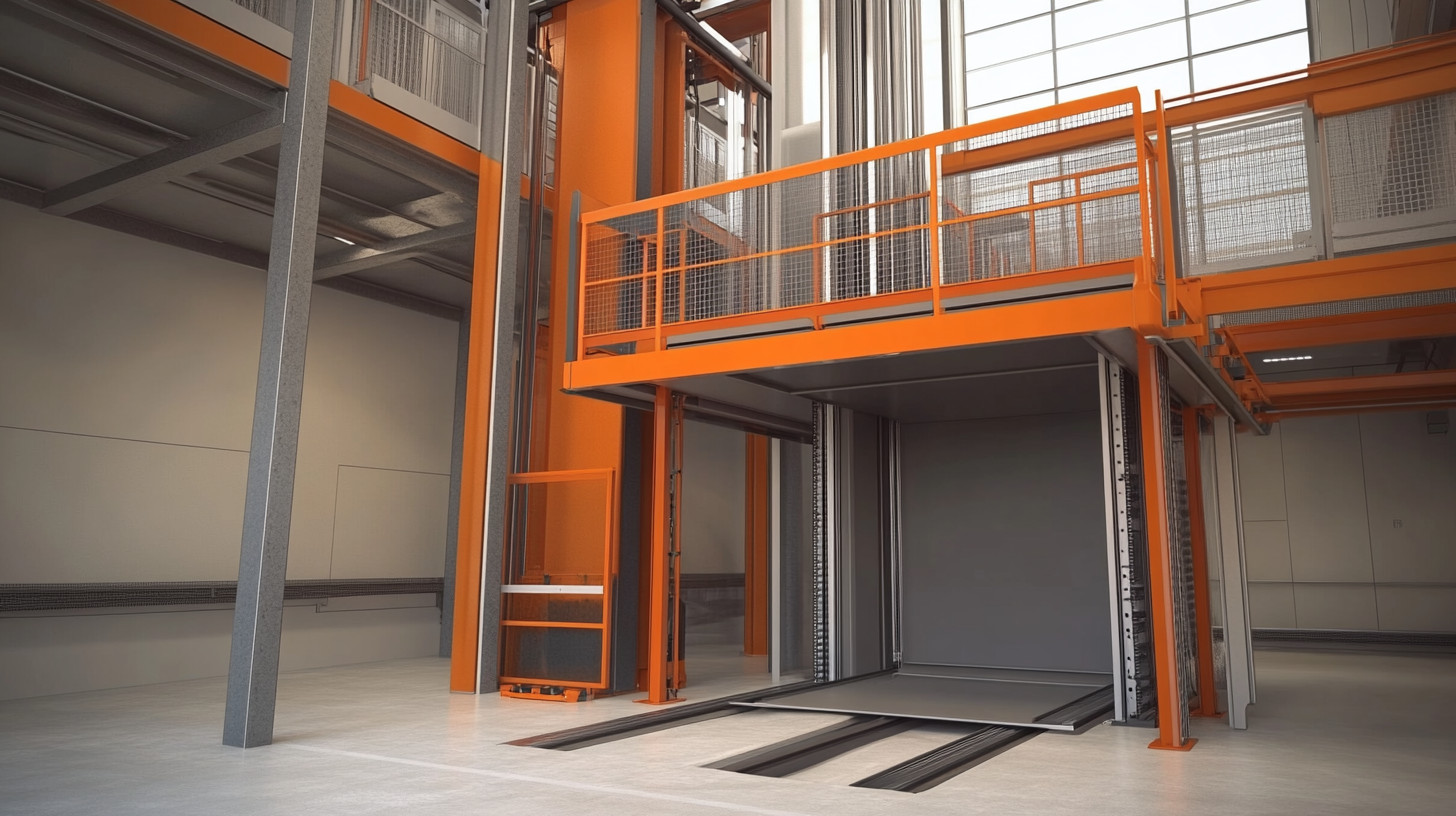Maximizing Operational Efficiency and Minimizing Maintenance Costs with Mechanical Lifts
In today's fast-paced industrial environment, maximizing operational efficiency while minimizing costs is critical for maintaining a competitive edge. One pivotal solution that has emerged is the use of mechanical lifts. These innovative machines not only improve the speed and precision of transporting materials and personnel but also streamline workflows across various sectors, including warehousing, construction, and logistics. By integrating mechanical lifts into daily operations, businesses can experience enhanced productivity and a remarkable reduction in manual labor.
Furthermore, implementing mechanical lifts can significantly lower maintenance costs associated with older, less efficient systems. Unlike traditional lifting equipment that often requires frequent repairs and higher energy consumption, modern mechanical lifts are designed with reliability and cost-efficiency in mind. This blog will delve into the advantages of mechanical lifts, exploring how their innovative features contribute to operational excellence while ensuring that maintenance expenses remain low. Embracing these technological advancements represents a smart investment for any organization looking to thrive in a competitive marketplace.

Understanding the Role of Mechanical Lifts in Operational Efficiency
Mechanical lifts play a crucial role in enhancing operational efficiency across various industries. These devices are designed to facilitate the movement of goods and personnel, effectively streamlining processes that would otherwise take considerable time and labor. By automating lifting tasks, mechanical lifts eliminate the need for manual handling, which not only increases speed but also minimizes the risk of workplace injuries. As a result, organizations can maximize their productivity while ensuring a safer environment for their employees.
Additionally, the strategic implementation of mechanical lifts can significantly reduce maintenance costs. Modern lifts are engineered with advanced technology that requires less frequent servicing and offers improved durability. This reliability means fewer interruptions in operational workflow and lower expenses associated with equipment failure or unexpected repairs. Furthermore, by optimizing the lift design for specific operational needs, businesses can tailor their systems to function more effectively, further driving down costs and enhancing performance.
In integrated environments where space and accessibility are paramount, mechanical lifts provide a functional solution that supports logistical efficiency. By optimizing vertical transportation, companies can better manage their inventories and make effective use of their facilities. Ultimately, the role of mechanical lifts extends beyond simple transportation; they are a vital component in developing streamlined processes that contribute to an overall increase in operational efficiency and cost-effectiveness.

Key Features of Mechanical Lifts That Enhance Productivity
Mechanical lifts have become an essential component in various industries, contributing significantly to operational efficiency and cost-effectiveness. The key features of these lifts enhance productivity by streamlining processes and reducing the time and labor involved in transporting materials. One of the standout attributes is their versatility; mechanical lifts can be configured for different applications, be it in warehouses, construction sites, or manufacturing facilities. This adaptability allows businesses to optimize their setup for specific tasks, improving workflow and minimizing downtime.
Another notable feature is the precision with which mechanical lifts operate. Advanced safety mechanisms ensure that loads are handled securely, which minimizes the risk of accidents and damage to goods. Many modern lifts come equipped with smart technology, allowing for real-time monitoring and diagnostics. This capability not only ensures maintenance needs are anticipated but also helps in tracking performance metrics that can inform further operational improvements.
Moreover, energy efficiency is a hallmark of contemporary mechanical lifts. Many designs now incorporate energy-saving features that reduce the environmental impact while lowering utility costs. This focus on energy efficiency not only supports sustainability goals but also increases the bottom line, as reduced energy consumption translates into savings over time. In essence, the features embedded in mechanical lifts are pivotal in creating a reliable, safe, and cost-efficient operational environment, driving productivity to new heights.
Maximizing Operational Efficiency and Minimizing Maintenance Costs with Mechanical Lifts
This chart illustrates the relationship between the key features of mechanical lifts and their impact on operational efficiency and maintenance costs.
Strategies for Reducing Maintenance Costs of Mechanical Lifts
In the quest for operational excellence, organizations are increasingly focusing on minimizing maintenance costs associated with mechanical lifts. Implementing strategic approaches not only enhances the lifespan of the equipment but also contributes to significant financial savings. One effective strategy is regular training for operators to ensure they are well-versed in the optimal use of mechanical lifts. Proper operation reduces wear and tear, thereby lowering the frequency of repairs and associated costs.
Another key method for reducing maintenance costs lies in the adoption of advanced monitoring technologies. By utilizing predictive maintenance techniques, businesses can anticipate potential issues before they become significant problems. This proactive approach allows for scheduled maintenance during downtime rather than emergency repairs, resulting in less disruption and reduced costs. Additionally, embracing ergonomic solutions can further enhance operational efficiency, particularly in environments like healthcare settings where reducing lifting injuries is vital. By fostering a culture of safety and efficiency, organizations can not only ensure the well-being of their employees but also optimize their mechanical lift operations for greater long-term value.
Maximizing Operational Efficiency and Minimizing Maintenance Costs with Mechanical Lifts
| Strategy | Description | Expected Impact | Frequency of Maintenance |
|---|---|---|---|
| Regular Maintenance Checks | Scheduling periodic inspections to identify issues early. | Reduces unexpected breakdowns by 30%. | Monthly |
| Employee Training | Training staff on proper usage to prevent misuse. | Decreases operational errors by 25%. | Annually |
| Implementing Monitoring Technology | Using sensors to monitor lift performance in real-time. | Enables proactive maintenance, reducing costs by up to 40%. | Ongoing |
| Scheduling Downtime | Planning maintenance during off-peak hours to minimize disruption. | Improves operational efficiency by 15%. | Seasonally |
| Utilizing Quality Parts | Investing in high-quality components to reduce failure rates. | Lowers replacement needs by 20%. | As needed |
The Importance of Regular Inspections and Timely Repairs
Regular inspections and timely repairs play a crucial role in maintaining the operational efficiency of mechanical lifts, which is essential not only for smooth operations but also for cost management. Just like in the helicopter maintenance, repair, and overhaul (MRO) market, ensuring that all components of mechanical lifts are functioning optimally can prevent unexpected breakdowns. Regular inspections help identify potential issues before they escalate, thus averting costly repairs and downtime.
Adhering to a stringent inspection schedule allows for the early detection of wear and tear, which is especially critical in high-usage environments. This proactive approach saves money in the long run, as fixing minor problems today can prevent them from becoming major repairs tomorrow. Furthermore, minimizing maintenance costs hinges on investing time and resources into routine checks that uphold the safety and reliability of mechanical lifts.
Timely repairs, akin to those in the aviation sector, ensure compliance with safety regulations and operational standards. Neglecting maintenance may lead to unsafe conditions and hefty penalties that far exceed routine servicing costs. Therefore, in both mechanical lift operations and helicopter MRO, prioritizing regular inspections and swift repairs is not just best practice; it is essential for sustaining efficiency and reducing overall expenses.
Maximizing Operational Efficiency and Minimizing Maintenance Costs with Mechanical Lifts
This pie chart illustrates the distribution of operational efficiency factors and maintenance costs associated with mechanical lifts, emphasizing the importance of regular inspections and timely repairs.
Integrating Technology for Optimal Lift Performance and Efficiency
The integration of advanced technology in mechanical lifts has revolutionized their performance and efficiency, making them essential assets in various industries. By incorporating smart sensors and IoT connectivity, modern lifts provide real-time data that helps operators monitor performance metrics, identify potential issues before they escalate, and streamline maintenance schedules. This proactive approach not only minimizes downtime but also enhances operational efficiency, allowing businesses to allocate resources more effectively.
Moreover, the use of predictive analytics in lift systems can lead to significant cost savings. By analyzing historical performance data, companies can better anticipate maintenance needs and avoid unexpected failures. This data-driven strategy enables organizations to minimize maintenance costs while ensuring that lifts operate at optimal performance. Additionally, with advanced control systems, lifts can adapt to varying loads and optimize energy consumption, further contributing to overall operational efficiency.
Investing in technology integration for mechanical lifts is not just about enhancing functionality; it’s about fostering a culture of efficiency and reliability. When lifts are equipped with intelligent technology, businesses can reduce their operational risks and increase the lifespan of their equipment. As industries continue to evolve, leveraging these technological advancements will be key in maximizing efficiency and minimizing costs, ensuring that businesses remain competitive in a rapidly changing landscape.

